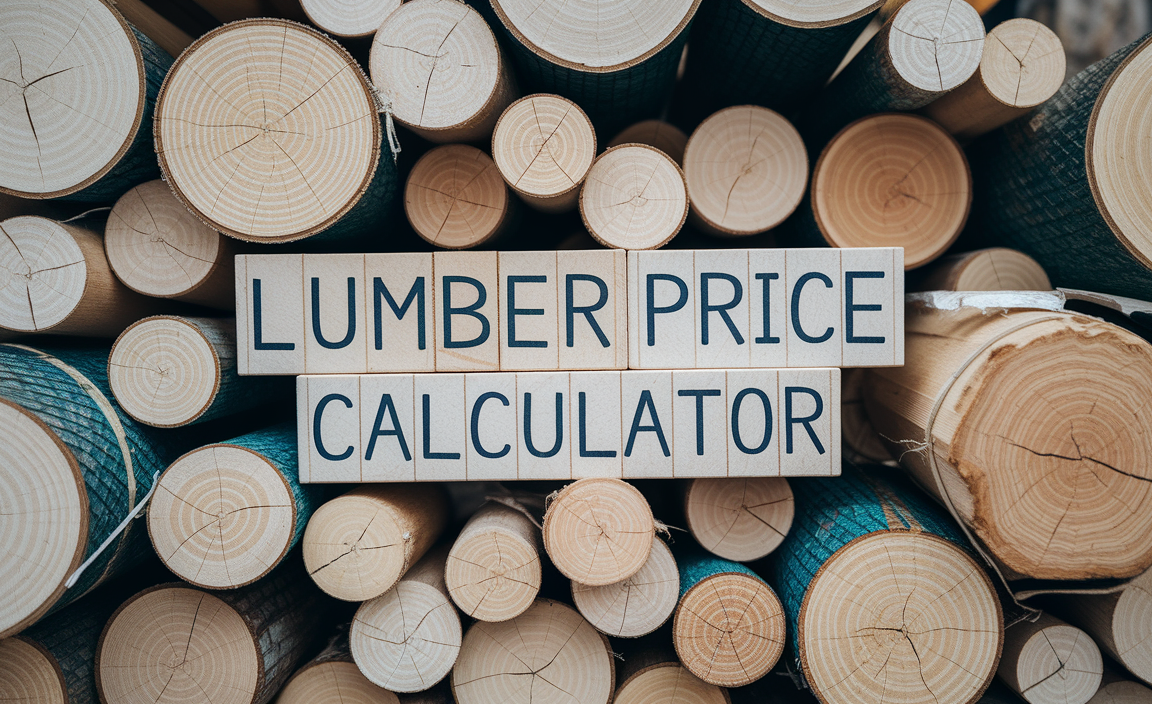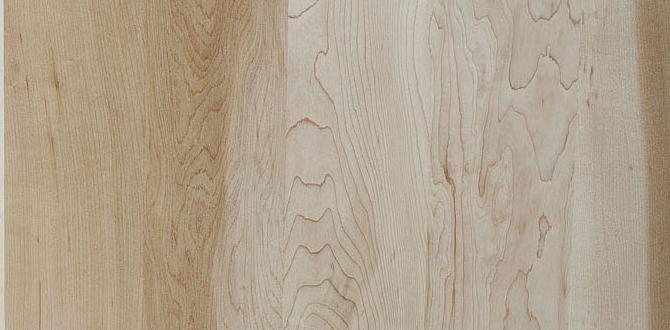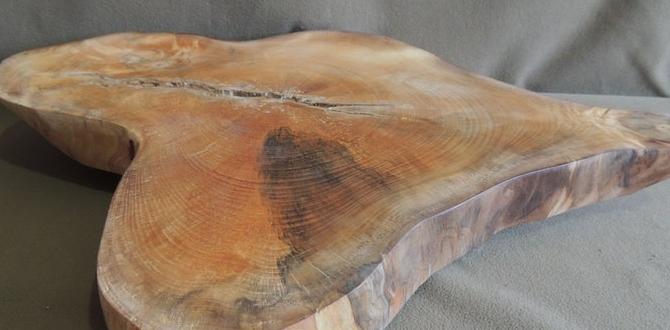Quick Summary:
Regular maintenance of your pneumatic nailer is crucial for performance and longevity. Follow these simple steps: clean the exterior, lubricate moving parts, check air fittings, inspect the magazine, and test fire. This guide provides easy-to-follow instructions for keeping your nailer in top shape for any project.
Hey there, DIYers and woodworkers! Jack Shaffer here, your go-to guy for all things nailers and tools. Ever get that frustrating feeling when your pneumatic nailer jams or just doesn’t drive nails straight? It’s a common issue, but the good news is, it’s usually preventable! A little bit of care goes a long way in keeping your trusty nailer running smoothly.
This guide is all about making pneumatic nailer maintenance simple and stress-free. We’ll walk through exactly what you need to do, step-by-step, to ensure your tool is always ready for your next project. No more wrestling with stubborn nailers, just smooth, consistent performance. Let’s dive in and get your nailer in tip-top shape!
Table of Contents
Why Pneumatic Nailer Maintenance Matters
Think of your pneumatic nailer like a reliable workhorse. Just like any tool that relies on moving parts and air pressure, it needs a little attention to keep performing at its best. Consistent care prevents small issues from becoming big problems, saving you time, frustration, and even the cost of repairs.
A well-maintained nailer means:
- Reliable Performance: It drives nails consistently and powerfully every time.
- Fewer Jams: Cleanliness and proper lubrication reduce the chances of nails getting stuck.
- Extended Lifespan: Proper care can significantly prolong the life of your tool.
- Safety: A well-functioning nailer is a safer nailer.
- Efficiency: You’ll spend less time troubleshooting and more time building.
Essential Tools and Supplies for Nailer Maintenance
Before we get started, let’s gather what you’ll need. You don’t need a whole workshop full of specialized equipment. Most of these items are pretty common around the house or easily found at your local hardware store.
What You’ll Need:
- Safety Glasses (Always your first priority!)
- Clean, lint-free rags
- Air tool oil or a few drops of 3-in-1 oil
- Small brush (an old toothbrush works great)
- Compressed air source (air compressor or canned air)
- Screwdriver (check your nailer’s manual for the correct type and size, usually Phillips or flathead)
- Work gloves (optional, but recommended)
- Small container or tray for parts
Step-by-Step Guide: How to Maintain Your Pneumatic Nailer
Maintaining your pneumatic nailer is straightforward if you break it down into simple steps. We’ll go through cleaning, lubricating, and checking the essential components. Remember to always consult your nailer’s owner’s manual for specific instructions tailored to your model.
Step 1: Disconnect Air Supply and Ensure Safety
This is the absolute most important step. Never work on a pneumatic tool while it’s connected to an air source. This prevents accidental firing and potential injury.
- Ensure your air compressor is turned off.
- Disconnect the air hose from the nailer.
- Press the trigger a few times while it’s disconnected to release any residual air pressure in the tool.
Step 2: Clean the Exterior
Dirt and debris can get into all sorts of places. Giving your nailer a good wipe-down is a quick and easy way to keep it looking good and performing well.
- Use a clean, dry rag to wipe down the entire exterior of the nailer.
- Pay attention to nooks and crannies where dust and wood chips tend to accumulate.
- For stubborn grime, you can slightly dampen your rag with water. Make sure the nailer is completely dry afterward.
Step 3: Lubricate the Air Inlet and Moving Parts
Lubrication is key to keeping the internal mechanisms running smoothly. Most pneumatic tools, including nailers, have a dedicated port for air tool oil.
- Locate the air inlet on your nailer (where the air hose connects).
- If your nailer has a specific oil port, apply 2-5 drops of air tool oil directly into it. Your owner’s manual will tell you the recommended amount.
- If there isn’t a dedicated port, you can often add a few drops of oil through the air inlet using a straw or a small applicator.
- After adding oil, reconnect the air hose (remember to turn on your compressor at a safe pressure, usually around 70-90 PSI).
- Pull the trigger a few times to distribute the oil throughout the tool. You might hear a slightly different sound as the oil works its way in.
- Disconnect the air supply again.
Tip: Use specific air tool oil for best results. It’s designed to lubricate effectively under pressure and at varying temperatures. If you don’t have air tool oil, a few drops of 3-in-1 oil can work in a pinch, but dedicated air tool oil is preferable for long-term maintenance.
Step 4: Clean and Inspect the Magazine
The magazine is where your nails are stored and fed. Keeping it clean ensures smooth nail feeding and reduces misfires or jams.
- With the air disconnected, open or remove the magazine. This often involves sliding a latch or a small lever.
- Use a dry rag to wipe out any dust, wood shavings, or old nail debris.
- A small brush can help dislodge stubborn particles in the tracks.
- Inspect the magazine for any dents or damage that could impede nail feeding. If you find significant damage, it might be time to consider replacing it.
- Ensure the follower (the spring-loaded piece that pushes the nails) moves freely.
Step 5: Check the Driver Blade and Nosepiece
The driver blade is the part that actually strikes the nail, and the nosepiece guides it. These need to be in good condition.
- Carefully inspect the driver blade for any signs of wear, bending, or burrs. A damaged blade can lead to jams or improper nail setting.
- Examine the nosepiece for any damage or excessive wear. If the contact point is worn down, it might affect how the nail is driven.
- If your nailer allows for it, you might be able to detach the nosepiece for a more thorough cleaning. Refer to your manual.
Step 6: Clear Any Jams Professionally
If you encounter a nail jam, don’t force it! Gentle coaxing is usually required. Always disconnect the air supply first.
- Disconnect the air supply.
- Look into the magazine and nosepiece for the jammed nail.
- Often, you can use a pair of pliers (gently!) to pull the nail out.
- Some nailers have a mechanism to release jammed nails, like a lever or a way to open the nosepiece. Consult your manual.
- Avoid using excessive force, as this can damage the tool. If a jam is stubborn, it might indicate a deeper issue that requires professional attention.
Step 7: Inspect Air Hoses and Fittings
A leaky air system can significantly reduce your nailer’s power and efficiency. While not strictly part of the nailer itself, it’s critical for its operation.
- Check your air hoses for any cracks, cuts, or wear marks. Damaged hoses should be replaced immediately.
- Make sure all fittings are securely attached and not leaking. You can often hear small leaks, or you can use a soapy water solution to find them— bubbles indicate a leak.
- Ensure the quick-connect fitting on the nailer and your air hose are clean and free of debris.
Step 8: Test Fire
After cleaning and lubrication, it’s time to test your nailer to ensure everything is working correctly.
- Reconnect the air hose to the nailer.
- Set your air compressor to the recommended operating pressure (refer to your nailer’s manual, typically around 70-120 PSI, but for testing, a slightly lower pressure like 70-90 PSI is fine).
- Find a piece of scrap wood.
- Hold the nailer firmly against the wood and pull the trigger.
- Listen for smooth operation and watch for nails to be driven consistently.
- Try firing a few nails to confirm everything feels right.
Frequency of Maintenance
How often should you perform these maintenance tasks? It depends on how much you use your nailer.
| Usage Level | Frequency of Lubrication | Frequency of Cleaning |
|---|---|---|
| Light Use (A few projects a year) | Every 6 months or annually | After Each Project |
| Moderate Use (Monthly projects or regular at-home use) | Every 3 months | After Each Project |
| Heavy Use (Daily or weekly professional use) | Bi-weekly or as per manufacturer recommendation | Daily or After Each Significant Job |
Even if you don’t use your nailer often, it’s a good idea to give it a quick clean and perhaps a drop of oil at least once a year to keep the seals from drying out and the internal parts functional. For more information on general tool maintenance, resources like Tools of the Trade offer excellent advice.
Common Pneumatic Nailer Problems and How Maintenance Helps
Many common frustrations with pneumatic nailers can be traced back (and prevented!) by simple maintenance:
- Nail Jams: Often caused by dirt, debris, or a misaligned driver blade. Regular cleaning of the magazine and inspecting the blade helps prevent this.
- Weak Nail Driving: Insufficient lubrication can cause internal parts to wear or stick, reducing piston speed and power. Proper oiling ensures the piston moves freely. Leaks in hoses or fittings also contribute, which is why checking those is important.
- Misfires: A dirty magazine or a sticky driver can prevent proper nail engagement. A clean magazine and well-lubricated internals resolve this.
- Air Leaks: Worn O-rings or seals can develop. While this might require replacement parts, regular lubrication can help keep seals supple and extend their life.
- Inconsistent Nail Depth: This can be due to debris in the nosepiece, a bent driver, or inconsistent air pressure. Maintaining cleanliness and ensuring air connections are good helps.
When to Seek Professional Help
While most pneumatic nailer maintenance is DIY-friendly, there are times when it’s best to let a professional handle it. If you’ve gone through the regular maintenance steps and are still experiencing issues, or if you notice:
- Significant damage to the tool body or nosepiece.
- A bent or broken driver blade that you cannot (or are not comfortable) replacing.
- Persistent air leaks that you can’t pinpoint or fix.
- The tool makes unusual grinding or knocking noises.
- You’re uncomfortable disassembling parts beyond basic cleaning.
In these cases, taking your nailer to a certified tool repair shop is a wise decision. They have the specialized knowledge and parts to get your tool back into optimal working condition.
For those looking to understand tool wear and tear, resources from organizations like OSHA provide insights into tool safety and maintenance best practices, which indirectly stress the importance of keeping tools in good working order: OSHA Worker Safety Hazards.
Troubleshooting Common Issues
Even with regular maintenance, you might run into minor snags. Here’s a quick guide:
Nailer Won’t Fire
Possible Causes & Solutions:
- No Air Pressure: Check compressor, hose connection, and tool itself for leaks.
- Safety Tip Depressed? Ensure the contact trip is pushed against the work surface.
- Jammed Driver Blade: Disconnect air, check for & manually try to free the blade (use pliers carefully).
- Trigger Mechanism Issue: May require deeper inspection or professional repair.
Nails Not Driving Fully
Possible Causes & Solutions:
- Low Air Pressure: Increase pressure on compressor (within tool’s max limit).
- Air Leaks: Check hose, fittings, and around the tool.
- Dirty or Worn Driver Blade: Clean and inspect the blade.
- Magazine Issues: Ensure nails are loaded correctly and follower moves freely.
Nail Jams Frequently
Possible Causes & Solutions:
- Accumulated Debris: Thoroughly clean magazine and nosepiece. Regularly lubricate.
- Bent Nails: Ensure you’re using the correct type/size of nails for your tool.
- Magazine Misalignment: Check if the magazine is properly seated and screws are tight (if applicable).
Remember, always disconnect air before attempting any troubleshooting that involves touching internal parts.
FAQ: Your Pneumatic Nailer Maintenance Questions Answered
Q1: How often should I lubricate my pneumatic nailer?
A1: For light use, every 6 months to a year is usually sufficient. For moderate to heavy use, every 3 months or bi-weekly for professional use cases is recommended. Always check your manual for specific manufacturer guidelines.
Q2: What kind of oil should I use for my pneumatic nailer?
A2: It’s best to use dedicated air tool oil. If you don’t have that, a few drops of 3-in-1 oil can serve as a temporary substitute, but air tool oil is formulated for optimal performance and longevity in pneumatic tools.
Q3: Can I use WD-40 to lubricate my nailer?
A3: No, WD-40 is generally not recommended for lubricating pneumatic tools. It’s primarily a lubricant and water displacer, but it can evaporate quickly and attract dust, potentially causing more harm than good in the long run. Stick to air tool oil.
Q4: How do I know if my nailer is getting enough air pressure?
A4: The nailer won’t drive nails fully or with enough power when air pressure is too low. Conversely, too much pressure can damage the tool and cause safety hazards. Most nailers operate efficiently between 70-120 PSI, but always refer to your manual for the exact range.
Q5: My nailer is making strange noises. What could be wrong?
A5: Unusual noises like grinding or knocking often indicate internal wear or a serious issue, such as a damaged piston, cylinder, or driving blade. Disconnect the air supply immediately and consider having it inspected by a professional.
Q6: Do I need to disassemble my nailer completely for maintenance?
A6: For routine maintenance, complete disassembly is rarely necessary. Basic cleaning of the exterior, magazine, and lubricating the air inlet are sufficient. Only disassemble further if your manual explicitly details it or if you’re dealing with a specific solvable issue under guidance. Many parts can be maintained without taking the tool apart.
Q7: What are the signs that my nailer needs repair?
A7: Signs include persistent jamming that maintenance doesn’t fix, weak nail driving even at correct pressure, air leaks that can’t be sealed, unusual noises, or visible damage to critical components like the driver blade or nosepiece. If in doubt, professional assessment is best.
Conclusion
Keeping your pneumatic nailer in great working order doesn’t have to be a chore. By following these simple steps for regular cleaning and lubrication, you’re investing in the longevity and reliability of your tool. A well-maintained nailer means smoother projects, fewer frustrating jams, and increased safety on the job site.
Remember to disconnect the air supply before any maintenance, use the right tools and lubricants, and always consult your owner’s manual for model-specific advice. A little bit of care goes a long way, ensuring your pneumatic nailer remains a dependable companion for all your DIY and woodworking endeavors. Happy building!



